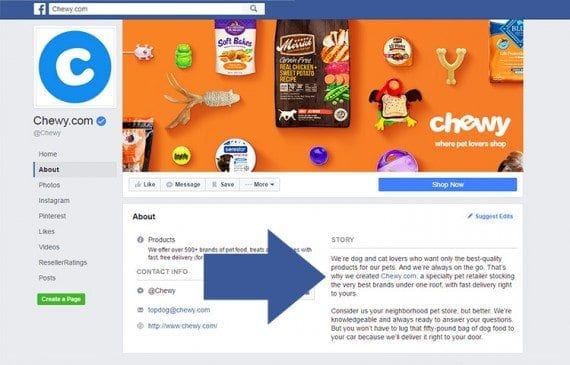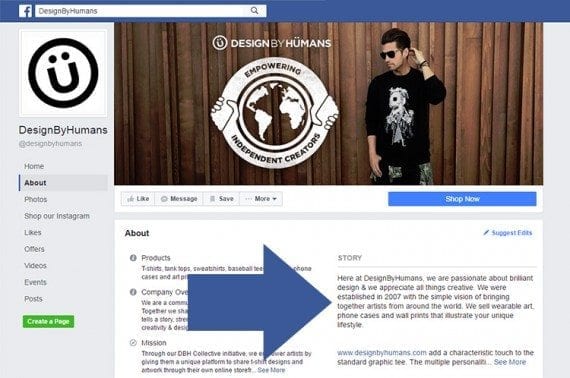Sometimes you need a short promotional description of your business for social media profiles, directories, or even the bottom of your press releases and product announcements. What you say about your company in just a few sentences can impact how potential customers respond.
The origin of the word “blurb” may have been German or American. It appeared, as an example, in author and scholar Brander Matthews’ 1906 book, American Character, and it was used to described short promotional descriptions printed on the front of a book’s dust jacket. According to Matthews, blurbs in 1906 were “becoming more and more colorful and clamorous.”
Over time, the term blurb evolved and it has come to mean just about any pithy description used to promote a creative work, a person, or a business. The latter form of a blurb, the business blurb, shows up all over the Internet and in public relations. If you have a business, you need a well-written blurb.
While there are many ways to go about writing a blurb, it can make sense to follow a simple, three-part model, starting with a value statement, offering supporting facts for that statement, and then linking the statement to a benefit for the reader or listener.
Start with a Value Statement

Chewy.com, a pet supply retailer, uses a blurb on its Facebook page.
The value statement tells the reader what’s important to your business. It describes what your company is about.
Here is an example of a blurb for Chewy.com, a pet supply retailer. This is the first of two paragraphs from the about page of the company’s Facebook profile.
“We’re dog and cat lovers who want only the best-quality products for our pets. And we’re always on the go. That’s why we created Chewy.com: a specialty pet retailer stocking the very best brands under one roof, with fast delivery right to yours.”
The first two sentences constitute the blurb’s value statement: “We’re dog and cat lovers who want only the best-quality products for our pets. And we’re always on the go.”
Chewy wants only the best-quality products for pets. It is a company by pet people for pet people. Oh, and they have busy lives too.
Here another example blurb, this time from DesignByHumans.
“Here at DesignByHumans, we are passionate about brilliant design & we appreciate all things creative. We were established in 2007 with the simple vision of bringing together artists from around the world. We sell wearable art, phone cases and wall prints that illustrate your unique lifestyle.”
From this value statement, we learn that DesignByHumans is about art. In fact, the folks at DesignByHumans are part of a passionate art community.
“Here at DesignByHumans, we are passionate about brilliant design & we appreciate all things creative.”
For your business blurb’s value statement, try to say what you stand for in just one or two sentences.
Offer a Reason for Being

A passion for art lead DesignByHumans to retailing.
After you have said what matters to your business in your blurb’s value statement, offer some evidence or proof to support that position. This is the reason your company is what it is.
In the Chewy example, this is handled in about half a sentence.
“That’s why we created Chewy.com: a specialty pet retailer stocking the very best brands under one roof…”
There is an implication here carried forward from the Chewy value statement. We know they are pet people and we know they are busy. The implied problem is that it takes time to find and obtain quality pet products. Thus, Chewy was created to be a relatively more convenient way to get those products.
Like Chewy, DesignByHumans explains that the founders’ passion for art and creativity lead them to retailing. DesignByHumans is also setting the table, if you will, for its benefit statement. It is a community of artists and the folks who appreciate art.
“We were established in 2007 with the simple vision of bringing together artists from around the world.”
Your business’s reason to be does not need to be complex or altruistic. Rather, just make it honest and consistent with your value statement.
Close with a Benefit
Finally, end your blurb with some sort of a benefit statement or implied benefit statement aimed at your customers.
For Chewy’s blurb, the benefit is implied and short: “…with fast delivery right to yours.”
Chewy is a company made up of pet people. They want first-rate products for the animals they love, but — like you — they are busy. So they collected all sorts of quality products and they are giving you access to those pet products in a fast and convenient way.
The benefit for the DesignByHumans’ shopper is community.
“We sell wearable art, phone cases and wall prints that illustrate your unique lifestyle.”
They implication is that DesignByHumans’ customers belong to the community of folks passionate about and appreciative of art. Buying a DesignByHumans product is a way of demonstrating your connection to that community. It is a way of belonging.
The benefit your company offers can take many forms and be expressed in many ways. But, nonetheless, it needs to be expressed. Tell folks what they get out of buying from your business.





